The Terracotta Warriors of Xian are one of the most important sights in China, and possibly the most important archaeological discovery of the 20th century. So if you are staying in Xian, how do you go about visiting? This handy guide is everything you need to know about visiting the Terracotta Warriors of Xian.
Staying in Xian for a couple of days? Check out our Xian itinerary HERE!
Contents
A Little Terracotta Army History
How Was the Terracotta Army Discovered?
The spring of 1974 was a hard one. A drought was parching the land and an order came through to dig wells. Farmers in a small village near Xi’an began doing just that but after digging down a small way, they struck something hard. Chunks of clay, formed into faces, arms, arrowheads emerged from the ground. They realised that this could be something special and reported it. Slowly archaeologists started to uncover the site and as clay soldiers emerged one after the other, they realised that it was going to be vast.
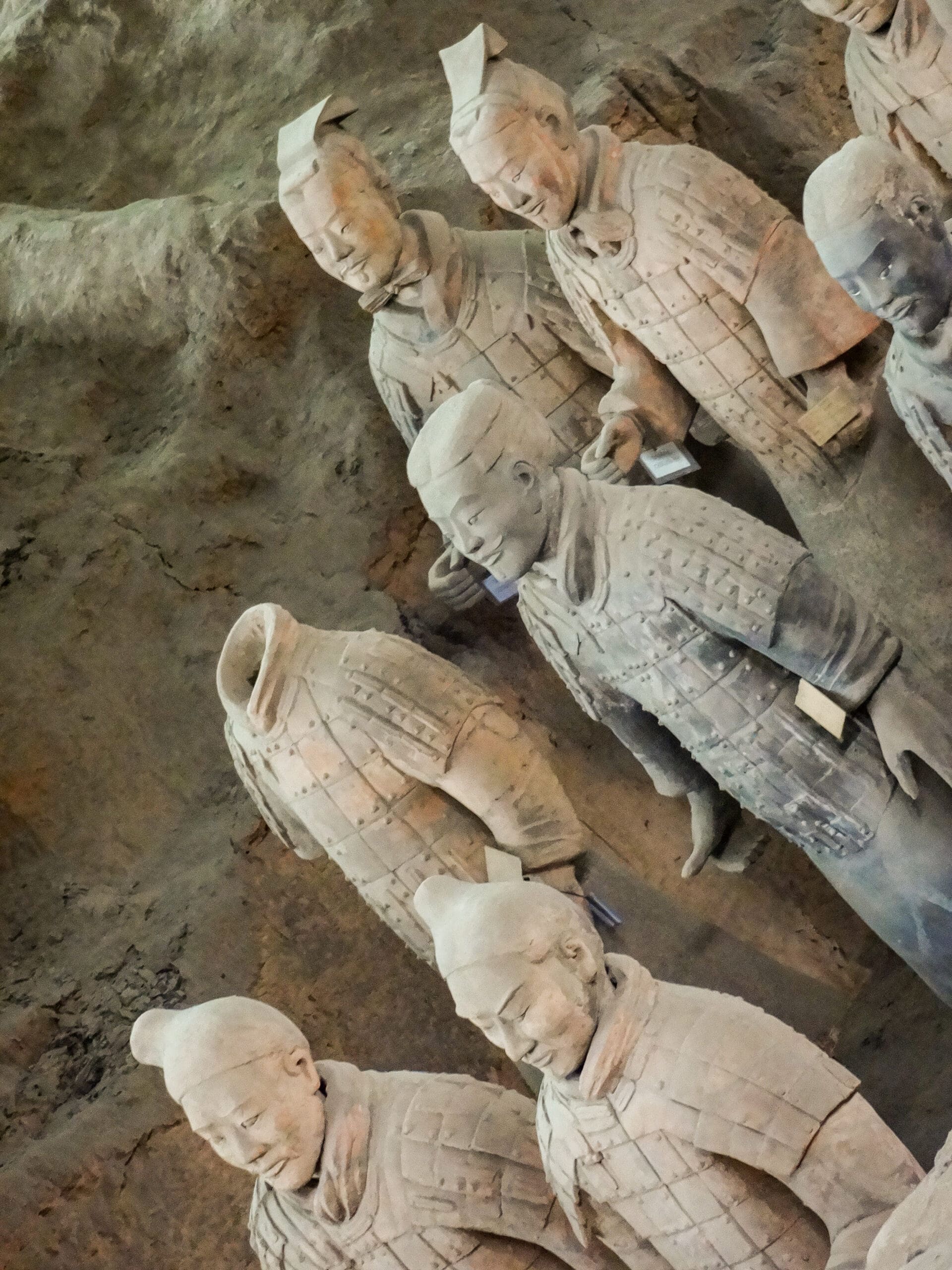
Qin Shi Huang’s Dream
A mile away from this new site, the burial compound of Qin Shi Huang was known to exist. Qin Shi Huang was the first ruler to unify the disparate kingdoms of the landmass we now call China. (It wasn’t a peaceful series of coups, there was considerable bloodshed). Qin Shi Huang became the first emperor of China and he really wanted it to stay that way.
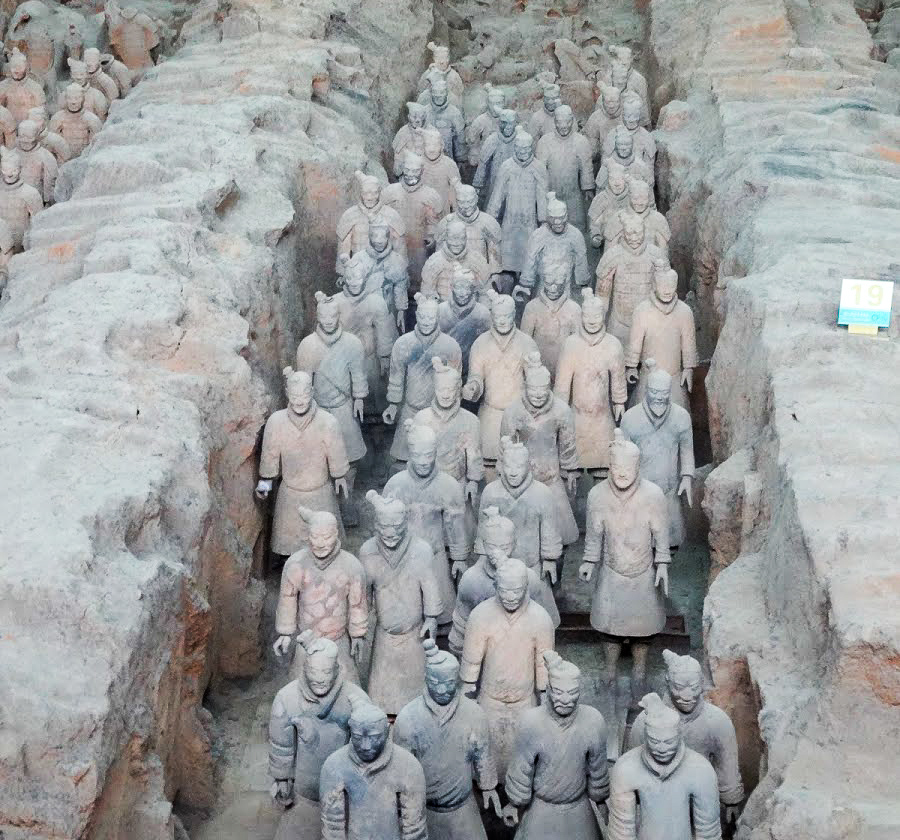
Qin Shi Huang loved being emperor so much that he decided he was going to live forever. However, just to be on the safe side, he created a huge complex full of things he would need to rule in the afterlife. Prior to this, concubines, servants and family members may have been buried alive along with the dead ruler. The clay facsimiles of an army changed all that. Subsequent emperors had these armies made too…but in miniature.
We know that there is a vast underground palace complex, complete with river and lakes, but it cannot be excavated. That is partly because archaeologists don’t want to expose it to the ravages of air, and partly because to stop the water in those rivers and lake from draining away, they filled them with mercury! Infact, it was the mercury Qin Shi Huang was given for his health that finally did him in.
Sadly, his concubines were never transformed into terracotta figures so they still suffered their grizzly fate.
Visiting the Terracotta Army
Most people have seen the famous pictures of rows of warriors, shoulder to shoulder. but it can’t prepare you to see it in the flesh…so to speak. Throughout the site, not only do they expect to find over 8000 soldiers, but over 500 horses and over 100 chariots.
As you explore the site, try to remember that these statues, date back over 2000 years. Work began in 246 BC when the 13 year old Qin Shi Huang took the throne and work continued solidly for 36 years.

What to See in The Terracotta Army Site
Pit One
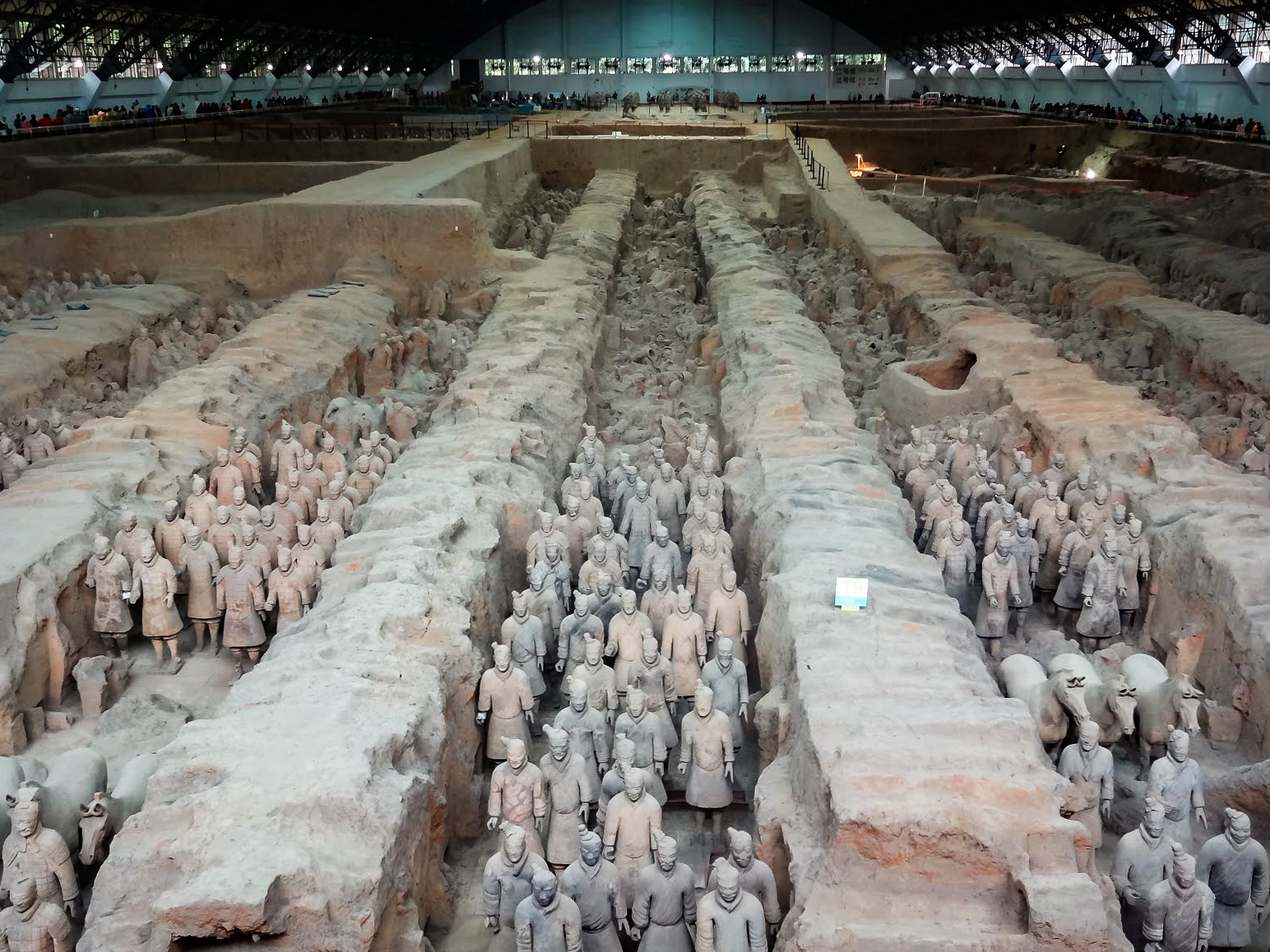
This was the first area to be excavated and it is the biggest yet discovered. Over 1000 warriors stand in neat rows. On entering you are face to face to with them. The figures face away from the burial ground in order to protect it which is why they are all looking directly at you.

The walkway is raised so you look down upon them. World leaders and often invited down to get up close and personal but us mere mortals are guided around the high-level gangway.
Most soldiers stand at around 6 foot (1.8m) and each of these grey figures is totally unique. Some faces hold a slight smirk, whilst others scowl. Eyes, hairstyles, noses and ears are all individual. There is a mix of uniform combinations and their different size hands are gripping a variety of long eroded wooden weapons. As you pass around the site, you will notice plenty of soldiers missing heads and/or hands. These were modelled separately and so detach more easily. The figures, although now a ghostly grey, were once painted in bright colours; blue, green, red and black. There is also evidence that some had leather armour on but this has also disappeared with time.
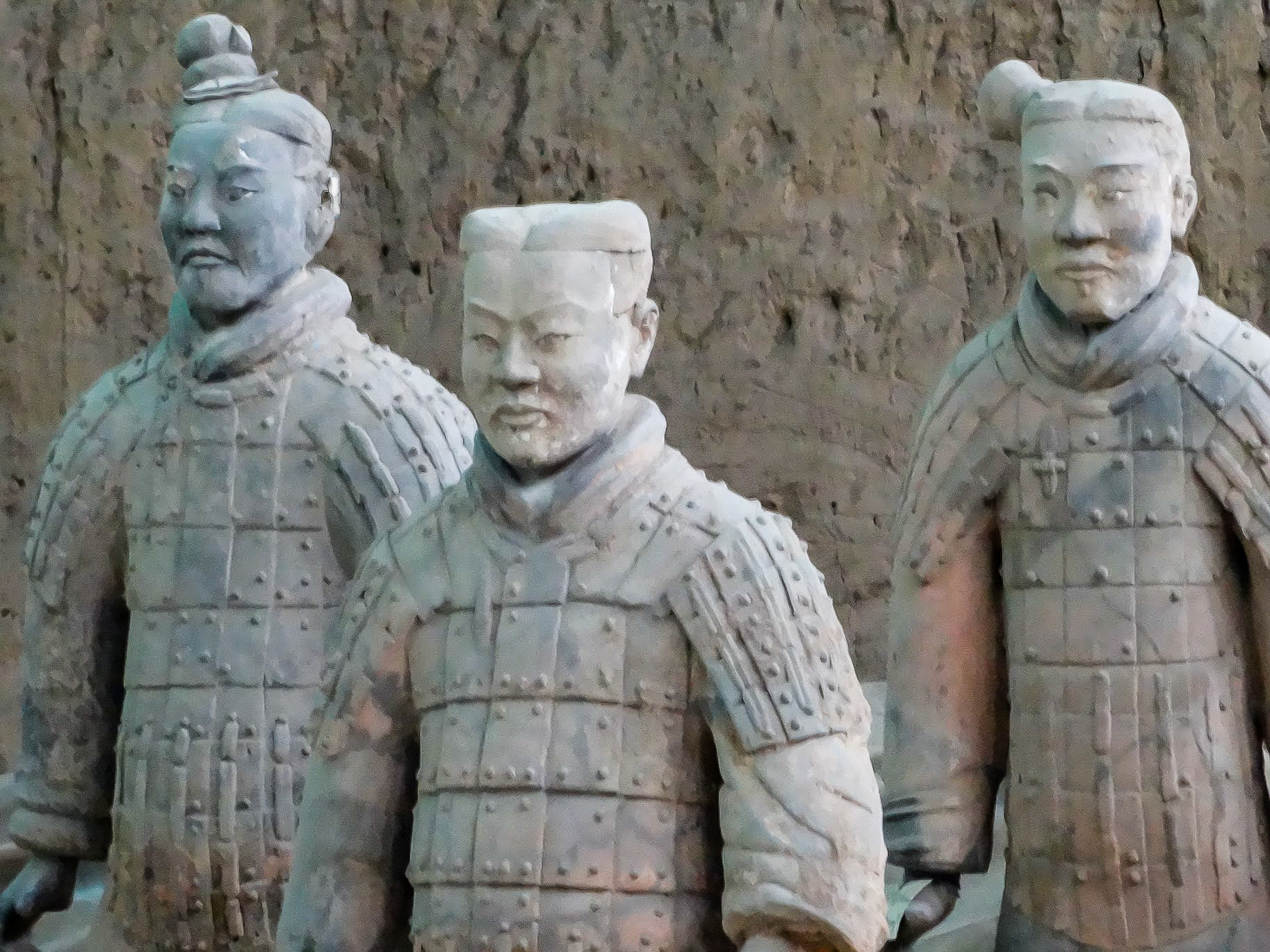
In one corner, archaeologists are still excavating, studying and reconstructing new soldier figures.

Pit Two
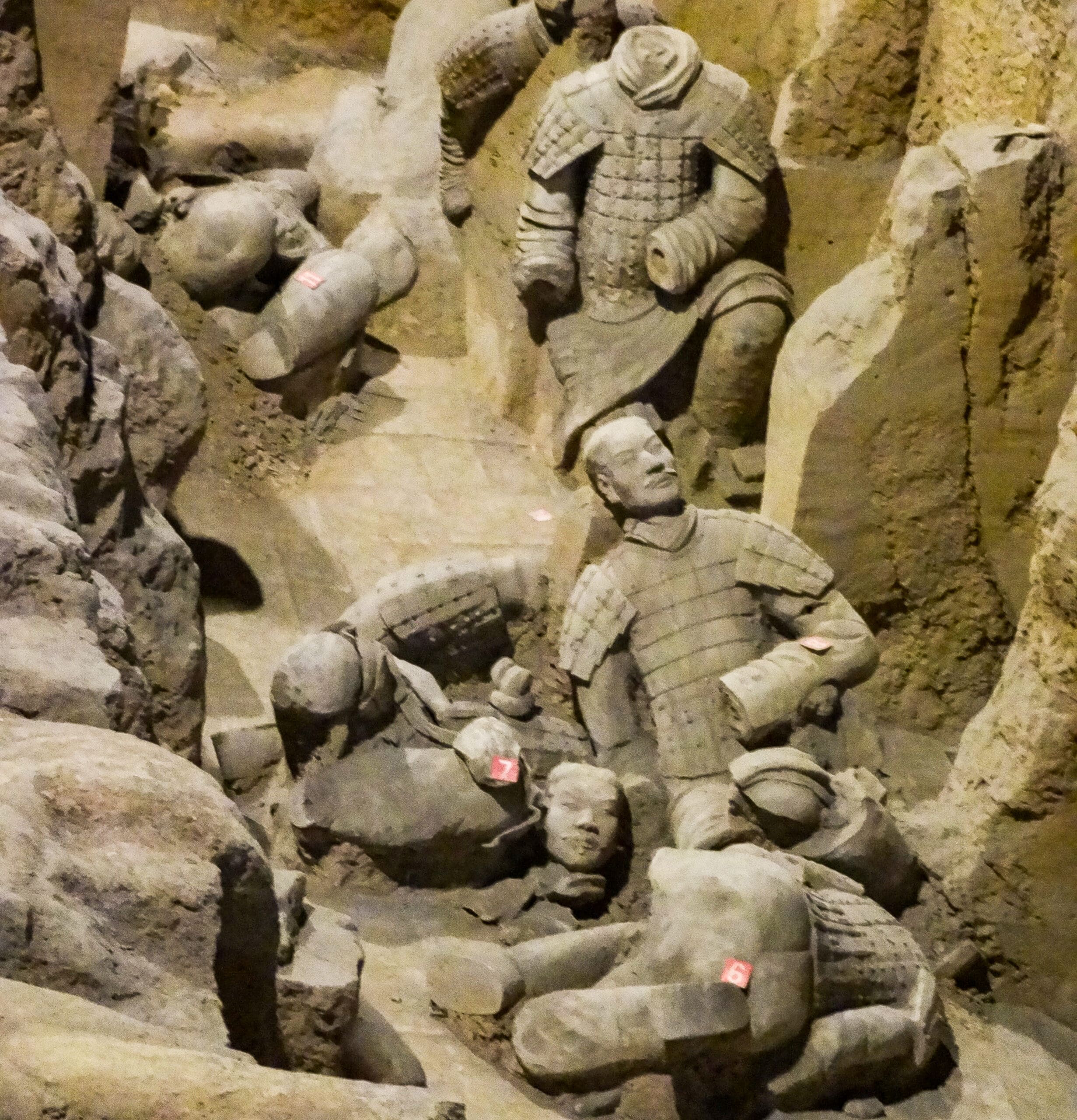
Pit Two holds a variety of forces. The four depicted are archers, calvary with their horses, charioteers and more infantry (as seen in pit one). This variety makes it the most interesting of the three. Although it is smaller at the moment, it is thought it is actually bigger than Pit One, with more figures in it so come back in 50 years and check out the progress!
Along the side, you will see four special figures behind glass. These are unusual figures in both their detail and their stances.
The General is a large chap, standing at 2m and wears special feathers in his cap. These represent those of a special kind of partridge known for its aggression. They fight to the death!
The cavalrymen, leading his horse is interesting as Qin Shi Huang was one of the first major rulers in this area of the world to appreciate the flexibility of horseback warfare. Horses can go where chariots cannot so he massively increased his calvary.
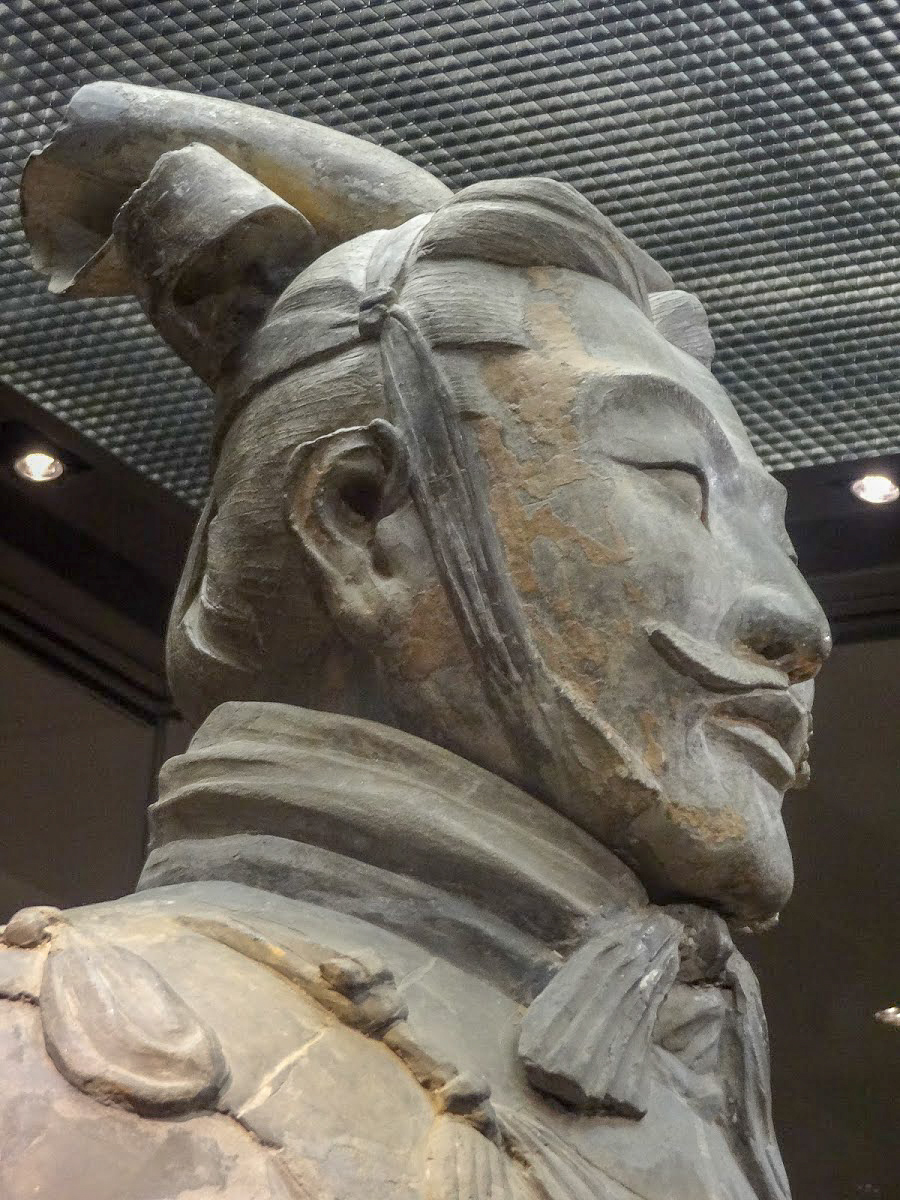
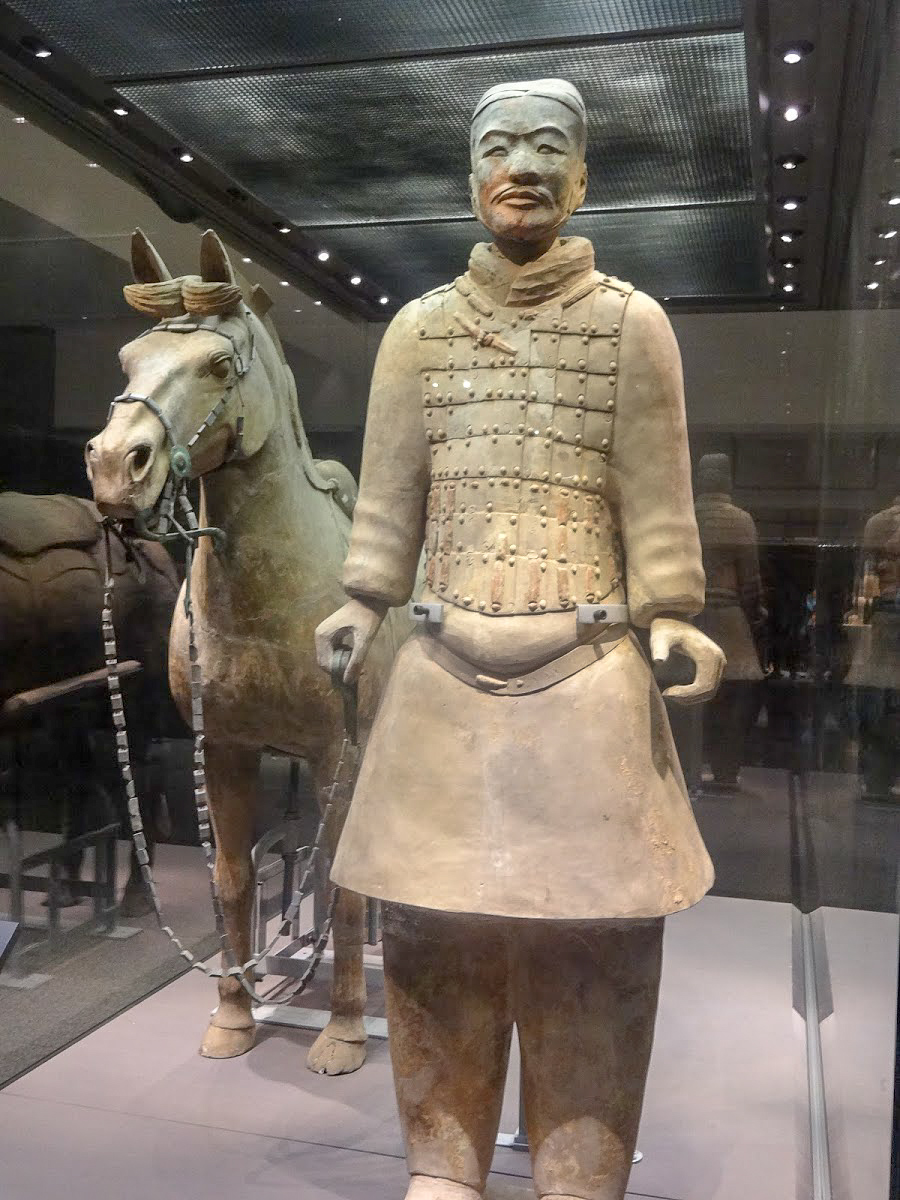
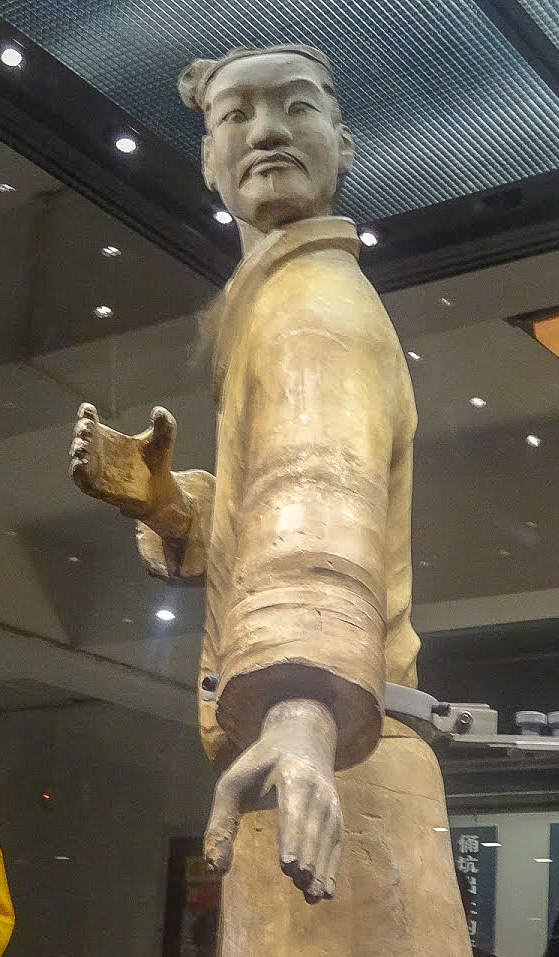
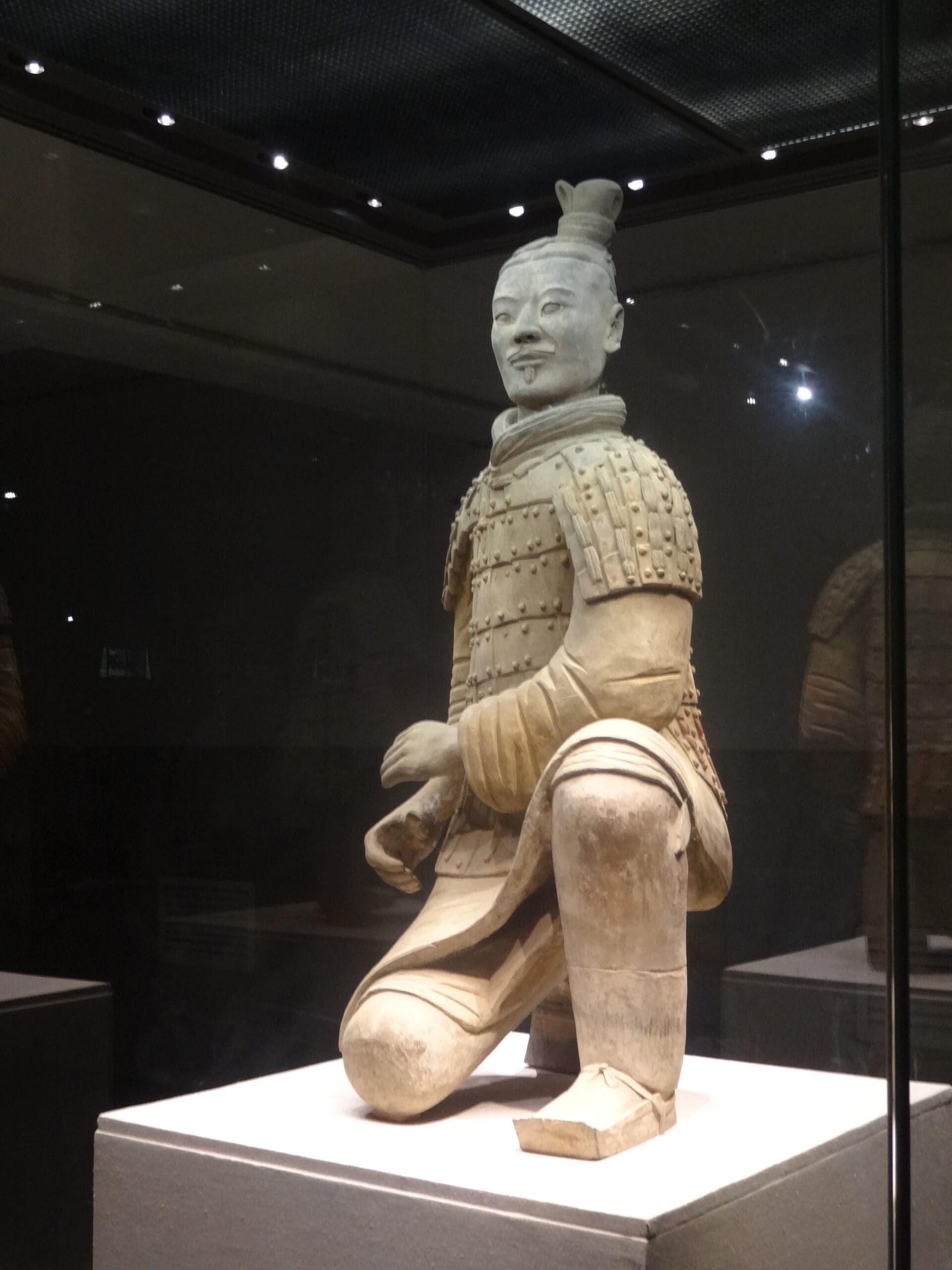
Pit Three
The smallest of the three pits, the statues here represent a command post. It is set behind the largest section of army and tucked to the side of the other. This indicates that it too is being protected by the foot soldiers.
The soldiers and horses below were once part of an ornate wooden chariot that has sadly deteriorated to the point that only soil testing reveals its secrets.
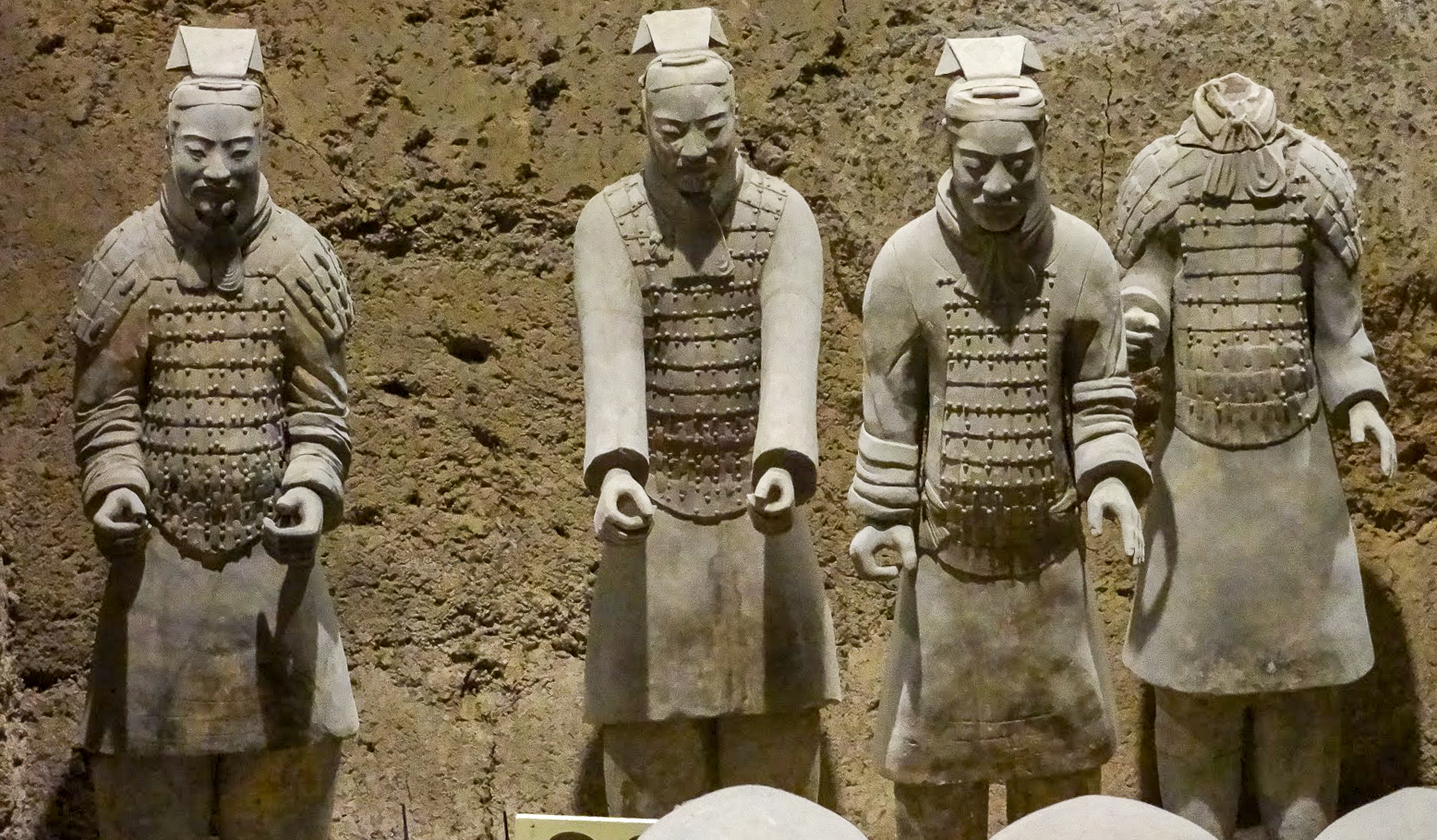
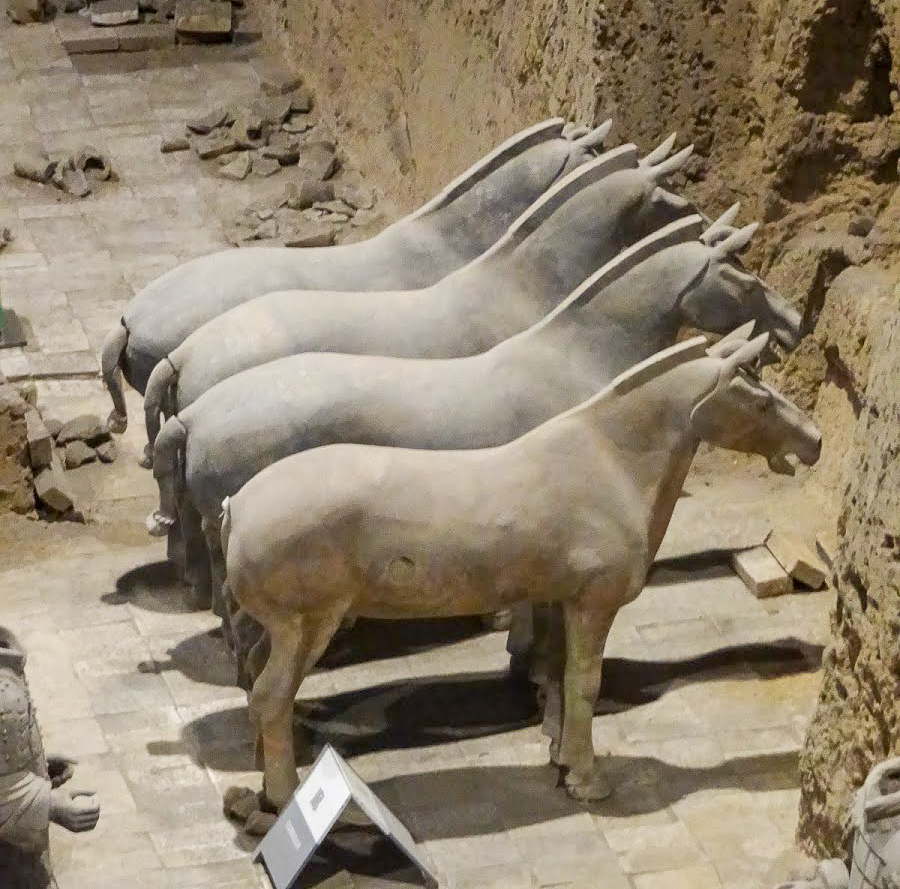
Exhibition of Bronze Chariots and Horses
In this dedicated exhibition hall, you will find the two stunning bronze chariots that have been discovered so far. Made from bronze, lead and decorated with gold and silver, they would have been super shiny when first made. Both are pulled by gorgeous horses (sadly, our photos were too blurry but at least we won’t spoil the surprise for you). One chariot is enclosed and has a kneeling driver. The other (below) has a coachman sitting under a large parasol.
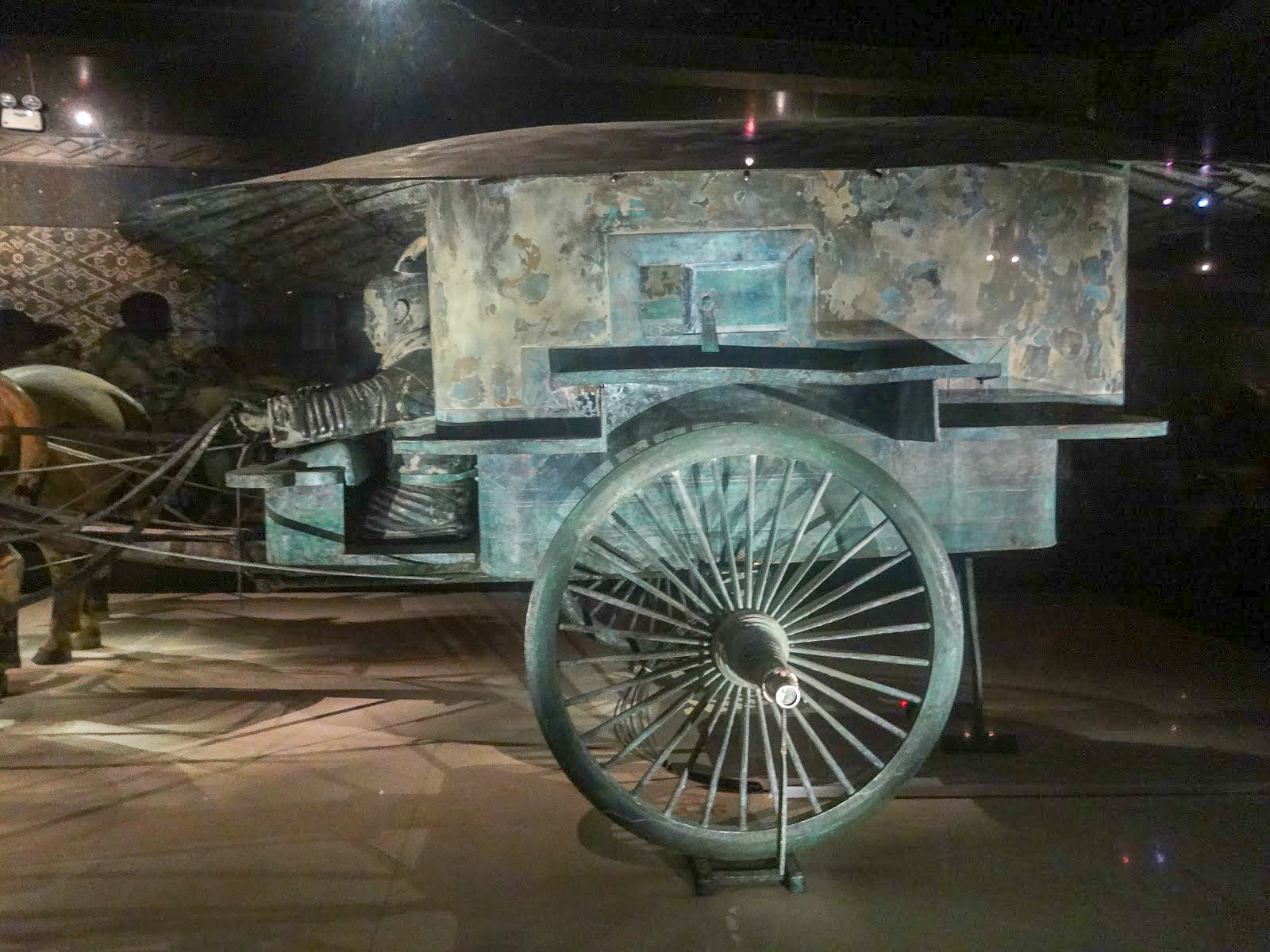
Qin Shi Huang Mausoleum
A short, free bus ride away there isn’t a great deal to see here. It cannot be excavated (remember all that mercury) but there are two pits to see. One contains civil servants (those faceless cogs in the government machine) whilst the other is more an entertainment pit. They have discovered musicians and acrobats in this one.
Information for Visiting for the Terracotta Warriors
Getting to the Terracotta Warriors by Bus
Get yourself to Xian’s main train station and hunt out the green bus 306 from the east square. The journey takes around an hour and costs just 7RMB We did this and it was incredibly easy.
Getting to the Terracotta Warriors by Taxi
You can hire a taxi from Xi’an for the whole day but this is quite an expensive option if you are solo or in the couple. The advantage is that you can plan an itinerary to suit you perfectly. Bargain a price for the whole day including the waiting time rather than just for each journey.
Joining a Terracotta Warrior Tour
If you are really interested in learning about the warriors we recommend booking on to a Terracotta Warrior Tour. Think carefully about what kind of tour you require. Do you want:
- A guide to take you around and explain it all?
- To see any additional sights en route?
- Food included?
- A morning, afternoon or all-day tour?
The advantage of finding a tour that includes a guide rather than hiring one at the entrance is the chance to read reviews ahead of time. If you want to learn all about the history of the Emporer but they are interested in the building of the structure around the pit, it would be good to learn that before you book!
Opening Times
Opening times don’t vary all that much throughout the year. The site just closes slightly earlier in the coldest time of the year.
- Mid- March to Mid-November – 08:30 – 18:00
- Mid-November to Mid- March – 08:30 – 17:30
Try to time your visit first thing in the morning or over lunch if you can as it will be ever so slightly less busy.
Tickets
If you are not a Chinese citizen you have two options for buying your tickets:
- Buy it on the door – You can go to the counter or use the self-service machines. (You will need your passport for ID)
- Book ahead with a travel agent – Pick someone reputable like ChinaDiscovery.com
The tickets will cost you:
- 120RMB – December to February
- 150RMB – March to November
Entering The Terracotta Army Site
Depending on where you arrive, you could be up to 1km away from the entrance. There are golf buggies ferrying tourists but you will need to queue for these and pay 5RMB each way It is only a 15 minute walk.

Pass across the large square surrounded by gift shops and restaurants and round to right until you come to the entrance proper. The souvenirs in these shops are overpriced and books signed by the farmers that “discovered the warriors” are of “questionable origin”. The restaurants are pretty average so why not just head to the KFC, at least you won’t be paying above the odds and you know what you’re getting.
Guides
You need to decide how to discover the site. You can either:
- Hire an audioguide – This costs ¥40 but you’ll need another ¥200 for a deposit. The guide is a little dull and rather limited.
- Hire a guide at the entrance – There are plenty of English speaking guides available and thy charge a variable rate, but usually, it is around ¥150. Chat to a few to find out if you like them.
- Stick with the guide included in your tour.

Final Thoughts on Visiting the Terracotta Warriors
This ever-evolving, ever-increasing archaeological dig is the most astonishing sight in China. Beating out the Forbidden City in our opinion, we could spend hours getting in and around the statues (if we were allowed). If you are planning a trip to China you must make the journey to Xian and see it for yourself. You will not regret visiting the Terracotta Warriors!
Rosie xx
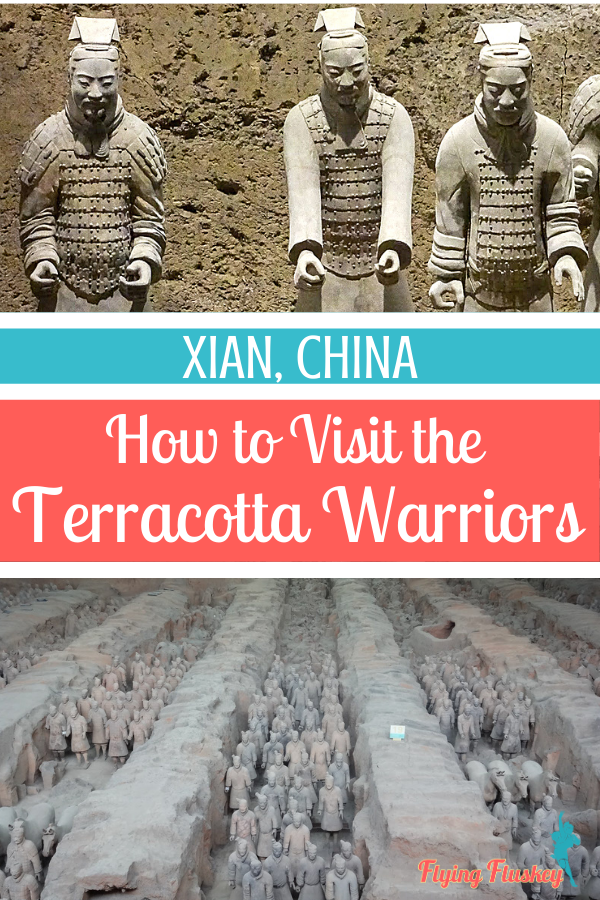
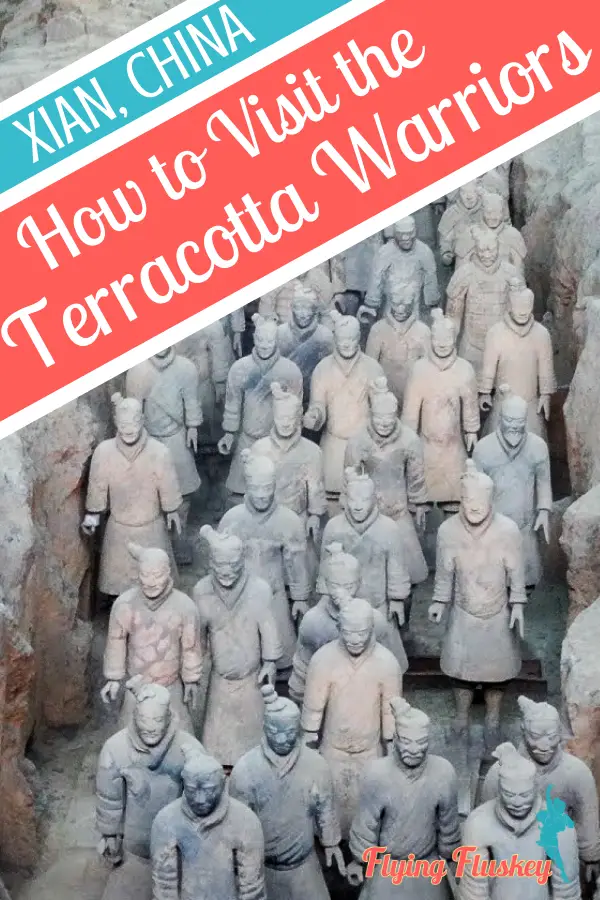
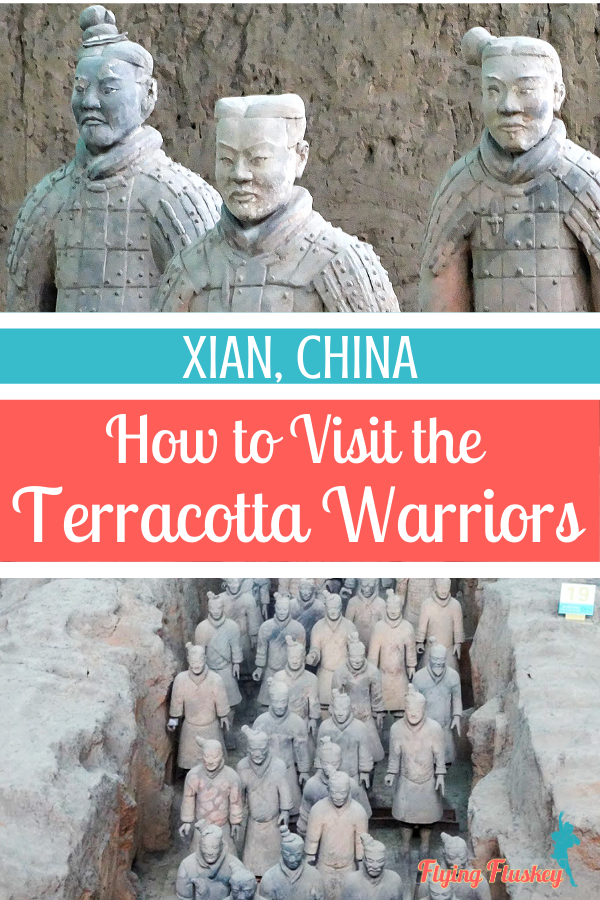
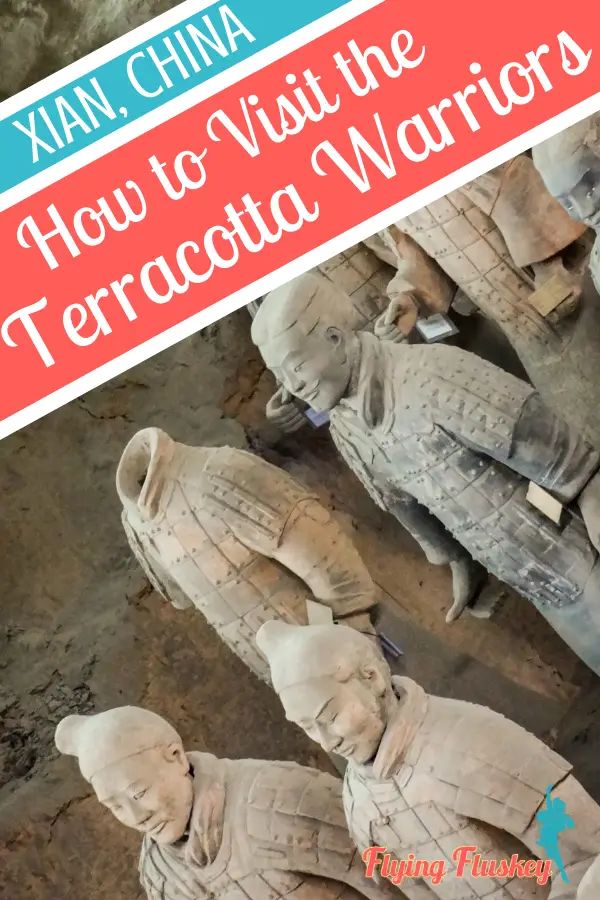



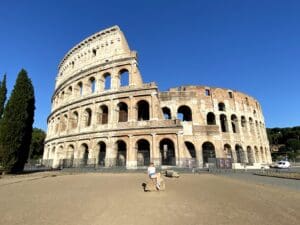


Leave Us A Comment